Hard earned and well-deserved Victory: Launching a New India
The era of ‘non-Congress single-party majority government’ rule of the five years has just ended. It proved to be a period of a stable government. Perhaps for the first time, it was a period which did not have a single unearthed scam committed by a member of the Union government. No one on earth had dreamt of BJP that it would sweep the 2014 Parliamentary General Elections and assume reins of power. It happened. This General election will be remembered by two glaringly curious features- one, this was an election which was without any issues, and secondly, the election presented a war of words and clashes between personalities.
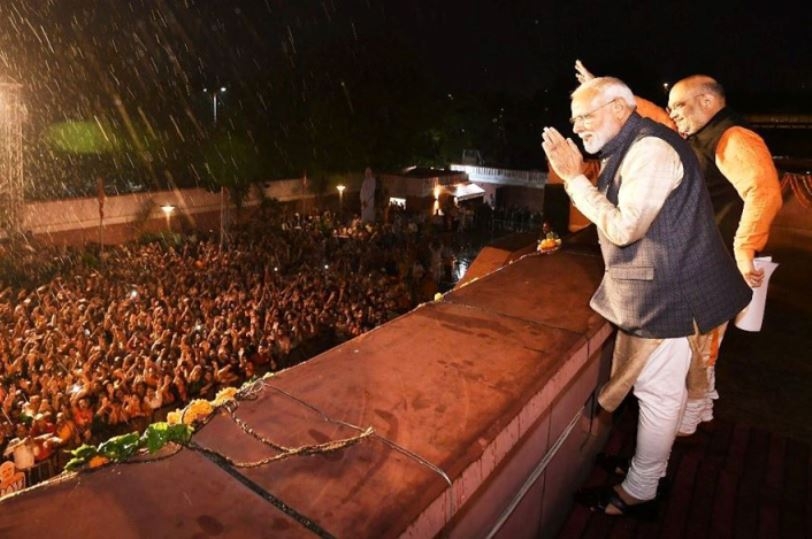
Modi Government, after it had assumed the reins of power of the governance, ordinarily kept before it, the following priorities:
1 Overhaul the judicial and the legal system in the country,
2 Galvanize the bureaucracy and motivate them towards nation building,
3 Bring about the liberal fiscal system with strict implementation of procedural discipline including reforms in tax structure for the economic development of the society,
4 Redefining the federal structure principle of cooperative federalism needs to be implemented.
5 'Center-state relations’.His government most judiciously distributed the recommendations of the Financial Commission.
6 Reorganizing effective and pragmatic planning, execution and distributing national proceeds equitably but tilted towards federating units and
7 Reforming the educational system for laying down a strong foundation for enlightened society and an individual’s personality development.
8 Redrawing and enhancing India’s international image
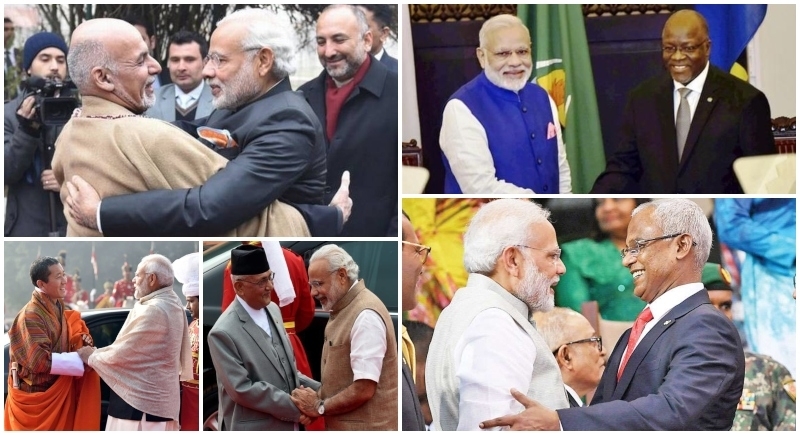
Prime Minister Narendra Modi's visits by country are as following : Argentina, Australia, Bangladesh, Belgium, Bhutan, Brazil, Canada, Fiji, Indonesia, Iran, Ireland, Israel, Jordan, Kenya, Kyrgyzstan, Laos, Maldives, Mauritius, Mexico, Mongolia, Mozambique, Netherlands, Oman, Pakistan, Palestine, Philippines, Portugal, Qatar, Rwanda, Saudi Arabia, Seychelles, South Korea, Spain, Sweden, Tajikistan, Tanzania, Thailand, Turkey, Turkmenistan, Uganda, Vietnam.
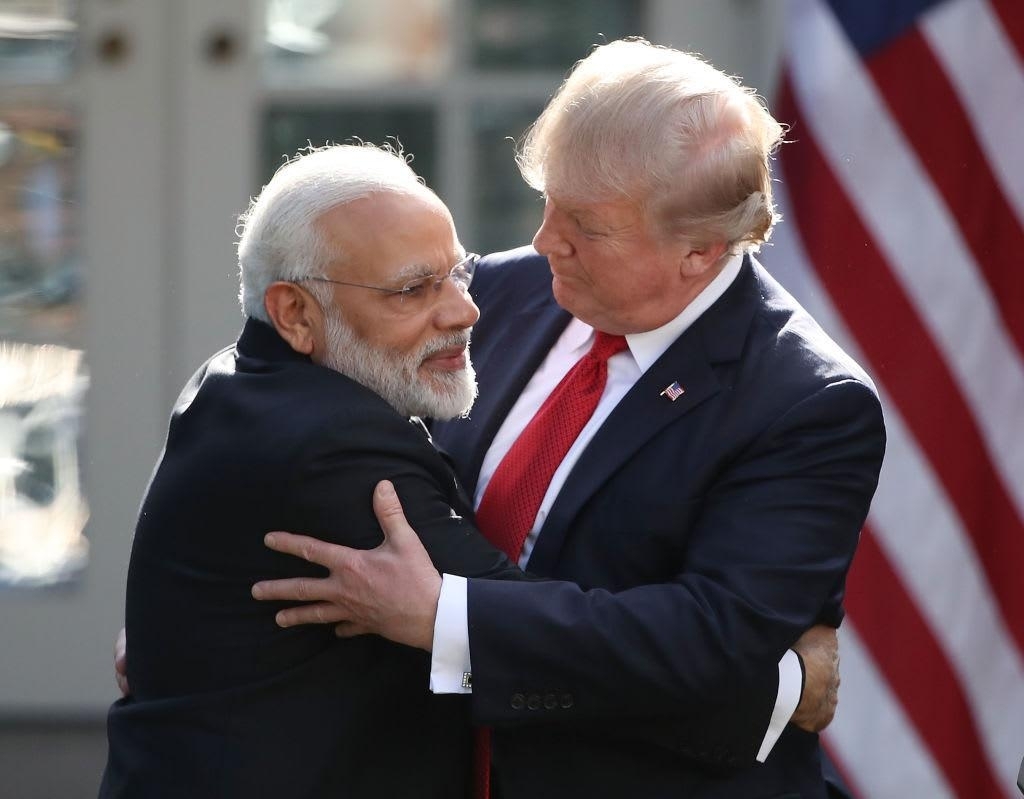
Twice visited: Afghanistan, Kazakhstan, Malaysia, Myanmar, South Africa, Sri Lanka, Switzerland, United Arab Emirates, United Kingdom, Uzbekistan.
Thrice visited: France, Japan.
Visited four times: Germany, Nepal, Russia, Singapore.
Visited five times: China, United States. Wherever he went he introduced the Indian culture. All these visits had a two-fold objective. First, Economic ties, and secondly, acquainting the foreign country with the Indian culture.
9 Redefining Indian foreign policy, esp. policy towards her neighbours by asserting Indian legitimate initiative in international organizations such as SAARC member countries, UNO, WTO, IMF etc.
10. Building a strong social foundation of Indian society as a pre-condition, conducive to economic growth.
11. Hardline policy ( zero tolerance ) and dealing towards terrorists’ activities in India as well as on the neighbouring across borders.
12. Balancing a shift in the policy of appeasement of minorities by inviting these into the national mainstream and social justice.
13. Modi was convinced that it was possible to inherit an honest society.
14. Modi was required to struggle to bring about a change in the image of the Government. Till recently the incumbents in the Government preferred the feeling that they were the legitimate successors of the colonial rulers who had left 1947.
15. Modi was determined to establish a bond between the common man and the Prime Minister as well as the Government. He called himself the ‘Pradhan Sevak’.
16. Modi’s masterstroke was his campaign against Dynasty rule and the psyche.
17. Modi put a grand picture of a glorious new India before the voters and appealed to these to do anything but do it for the nation since everything may happen but ‘Nation first’.
A strong Modi Government at the Center:
The salient features of the performance of the Modi Government during its first tenure could be listed as :
( i ) The Prime Minister, it is learnt, had asked the Union Ministers to look first after their allotted Ministries and its responsibilities and confine their press briefings only to the functions of their respective Ministries.
( ii) Special efforts were undertaken to galvanize the bureaucracy and orient its focus on the welfare of the people. It was a scheme to involve the bureaucratic layers and different echelons in the development process while bridging the rift between the citizens and the Administration.
(iii) The policy paralysis which had engulfed the governance was removed with determination
( iv ) Enquiry and investigation SIT’s were constituted with time-bound discharge responsibilities. Several committees had discharged their duties quite in time and proved their credibility.
( v ) The scam-accused were produced before the judicial authorities for further penal action. Nobody was spared and protected. ( vi ) The first three years witnessed the processes of formulation of several socio-economic policies which were supposed to be the basic simplification in the structure of its execution.
(vii ) The think tank of the new regime thought that the central authority in the process of planning needed a relook both at the policy-making level and its execution. Therefore, the Planning Commission was replaced by a new think tank team called “NITI Aayog” i.e. “National Institution for Transforming India Aayog”. The NITI Aayog was entrusted with the responsibility of planning socio-economic development of India aiming at ‘nation building’. It fosters the concept of cooperative federalism through a support structure of the public administrative system and continuous policy guidance to the federating units i.e. the States.
( viii ) The new regime gave top priority to bring about drastic changes in the taxation structure and the system in India keeping the tax-payer in focus. In July 2017, the GST was launched, which was a big step forward in unifying the commercial taxation system in the field of trade and commerce in India.
(ix) Narendra Modi was very keen on strengthening the individual life of the poor and the middle classes at their base stages. He knew where the shoe pinched.
(x) The new regime had before it the poorest of the poor citizen, it was this target which required the helping hand from the State, and the Modi Government promptly obliged. In fact, Modi removed the thought process that economic development plans were ordinarily for those citizens who were entitled to it.
(xi) The regime was convinced that it was equally important to bring about a change in the image of the ‘governing body’ of India as a matter of socio-cultural ethos. A clean face of the leader was an integral part of ‘development’.
( xii ) India has been a victim of terrorist attacks from time to time. Modi’s evaluation of such occurrences was that the Government looked at these incidences as sporadic skirmishes and was not prepared to pay more attention to these ‘skirmishes’. Such a Governmental attitude encouraged terrorists and their designs. Modi sent quite a hard signal to the planners of terrorism. The surgical strikes carried this message of a death blow to every participating criminal in terrorism. Modi thus exhibited his strong political will through his ‘56” wide chest’. The message reached and hit hard on the target. ( xiii ) ‘No-nonsense ‘attitude towards the financial scammers and making all-out efforts to bring back these culprits from abroad at any cost too sent a hard signal to all those whose names were in the queue to be forwarded to the court of law for appropriate penal action.
( vix ) Modi redefined the meaning and expression of ‘nationalism’. He is a Prime Minister who in his address to the nation as well as public speeches, remembers his ancestors and earlier great sons of the soil and urges the people to follow their footsteps as a mark of their respects.
Modi submits that in every situation everybody in the country and in the society as well, is engaged in the process of nation-building and therefore the principle of “the nation first” is pronounced. Modi is inculcating this principle in almost all the encounters he is required to face.
(xv ) The greatest challenge before India after 1947 was how to Indianise Indian affairs right from economic development policies in the country to foreign policies the world over. Modi untiringly moved all over the globe, explained the Indian stand on several issues and built a different image of the country. ( xvi ) Modi was fixed to face the challenge of corruption which was rampant in the administration as well as in the society. His emphasis on digitalization was a technique he deployed, it was with a view to keeping the person in good humour and without antagonizing anybody in the echelon.
Mere economic schemes of development do not help Something beyond required
The present author had already mentioned (in an Article published in News Bharati 2015) a few schemes the content of which were socially dominant but worked as a boost to the process of economic development. The narration is as follows:
“Swachha Bharat Abhiyan has a social and societal concern, which in fact is a precondition to the growth process. The Abhiyan is not merely a physical cleaning event, it is also supportive of the psychological state of mind which is conducive to the economic growth process. The status of a nation in the international arena depends on the strength of its socio-cultural foundation. Disciplined individual citizen is the key factor in the formation of a State and the nation.
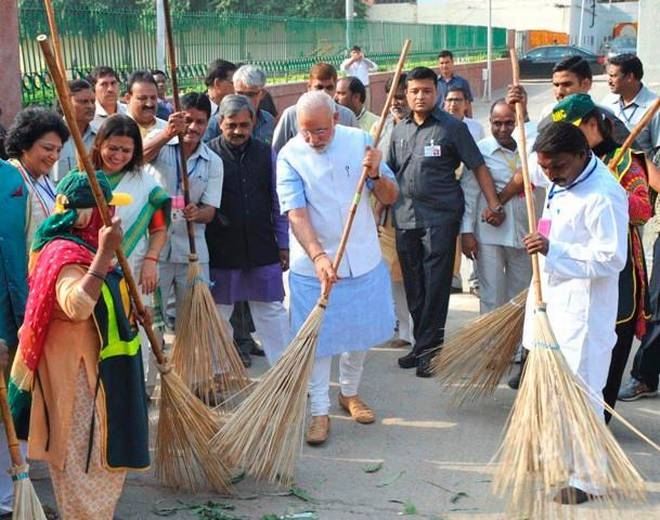
Modi has this disciplined individual citizen in view and ‘Swachha Abhiyan’ is aimed at grooming the individual towards making him effective in the nation-building process. Modi’s other inputs like ‘Jan Dhan Yojana’, ‘Make in India’, ‘Smart Cities Programme ‘, ‘Mann Ki Baat’, ‘Digital India’, are important initiatives aimed at building the individual more self-sufficient. Modi has been insisting more on internally systematizing applicant-friendly procedures and disciplining the concerned bureaucracy removing any scope for nepotism and corruption. The liberal political class and strict administrative class are pivotal in the process of public administration. He started the process himself initiating the long journey towards the transformation by taking the groom his own hands bridging the gap between the elitists and the commoners. It was a signal of bringing to an end the aura of the ruling class’, which represented and reminded the colonial memories.”
Keeping in view the poor, the needy citizen, the new regime introduced the following schemes which were beneficial to them. The monitors of these schemes were vigilant to see that the benefits would ultimately reach their proper destination.
1. “Pradhan Mantri Jan Dhan Yojana, 2. Pradhan Mantri Sukanya Samriddhi Yojana, Pradhan Mantri Mudra Yojana, 4. Pradhan Mantri Suraksha Bima Yojana, 5. Pradhan Mantri Jeevan Jyoti Bima Yojana, 6. Atal PensionYojana, 7. Gold Monetization Scheme, 8. Sovereign Gold Bonds. 9. Indian Gold Coin Scheme. 10. Stand- Up India, 11. Goods and Services Tax: (GST). 13. Pradhan Mantri Garib Kalyan Yojana, 14. Direct Benefit Transfer (DBT), 15. Swachch Bharat Kosh: 16. Swachch Bharat Cess: 17. Budgetary reforms 18. Affordable Housing-, 19. Deen Dayal Upadhyaya Gram Jyoti Yojana, 20. Pradhan Mantri Ujjwala Yojana.
These and several other schemes which were launched, the schemes laid the foundation of the basic infrastructure of the assistance and subsidy to the needy.
Sankalp Yatra: Narendra Modi--a Prime Minister with a vision and a mission for the motherland.
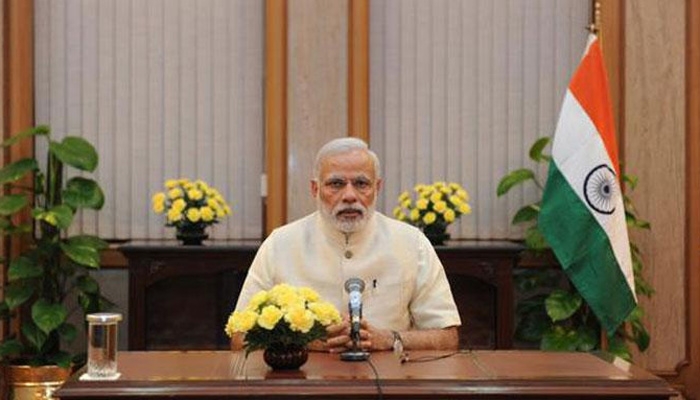
Here was a Prime Minister who used the Independence Day address to the nation as an occasion to share with the people the issues of socio-cultural relevance, avoiding to speak on politics as usual. Here was a Prime Minister who delivered a national address, perhaps for the first time since independence, replete with social and cultural content adopting an unprecedented technic, that of ‘direct approach’, linking himself directly with the people.
No Prime Minister before 2014 had adopted the technic. Another technic he adopted was employing an instrument , considered to be a poor man’s pleasing cheapest resort, i.e. broadcasting over the ‘radio’ which in India has since reached the remotest area where television has not reached or where only ‘radio’ is afforded by the poorest of the poor for listening to the informative and entertainment programmes. Prime Minister Modi chose to broadcast his 30 minutes speeches in his novel programme, another ‘first’, ‘Mann Ki Baat’, every month.
The content once again, replete with social and cultural relevance, has been there on the air uninterrupted for around 36 Sundays. Every month the Prime Minister picks up some social issue and shares his views with the people individually. The response is beyond expectations and since has become a super-hit programme, the villagers eagerly waiting at a stipulated time, for the Prime Minister’s voice, views, vision, and profusely showered applause over a certain commendable achievement by naming some individual student or a common farmer and advice on the issues which the villagers find it very close to their individual lives. The direct dialogue between the people and the ‘pradhan sevak’ over radio broadcasting has produced a very healthy apolitical environment in the remote rural areas hitherto unknown to anybody not only in India but perhaps in the world too. The Prime Minister has succeeded in creating a sense of mutual belonging to one another and a community sense among the masses.
Structural reinforcement for the benefit of the needy.
Modi had a well-planned design of development in his hand which he used skilfully and with full confidence. The above-mentioned narration will give you an idea as to how with a great prudence Modi had deployed the funds through the administrative machinery which was required for the benefit of the individual citizen. Compelling the Banking administration to respect the poorest of the poor when the ‘Jan-Dhan-Yojana’ was launched in the country, was a step forward with force and which was a sort of social revolution. It was an example of elevating the status of the last man in the last row, who too, on the other hand, felt satisfied with Modi’s financial system. Moreover,it was a psychological boost for the poor. How can he forget Modi in his lifetime ? We cannot forget that the poor are in majority who are staunch supporters of the Prime Minister.
The Prime Minister while announcing the decision of demonetisation in a special national telecast on 8th November, 2016, referred to three major reasons which led to the decision viz., (a) black money, (b) eradication of corruption, and (c) financing of terrorism and counterfeit currency. Later, according to an official release by the Press Information Bureau dated 30th August, 2017, the following were considered as the objectives of demonetisation: ( i) flushing out black money, ( ii )eliminate Fake Indian Currency Notes (FICN), ( iii) to strike at the root of financing of terrorism and left wing extremism, ( iv ) to convert non-formal economy into a formal economy to expand tax base and employment, and, ( v ) to give a big boost to digitalization of payments to make India a less cash economy.
Why Narendra Modi?
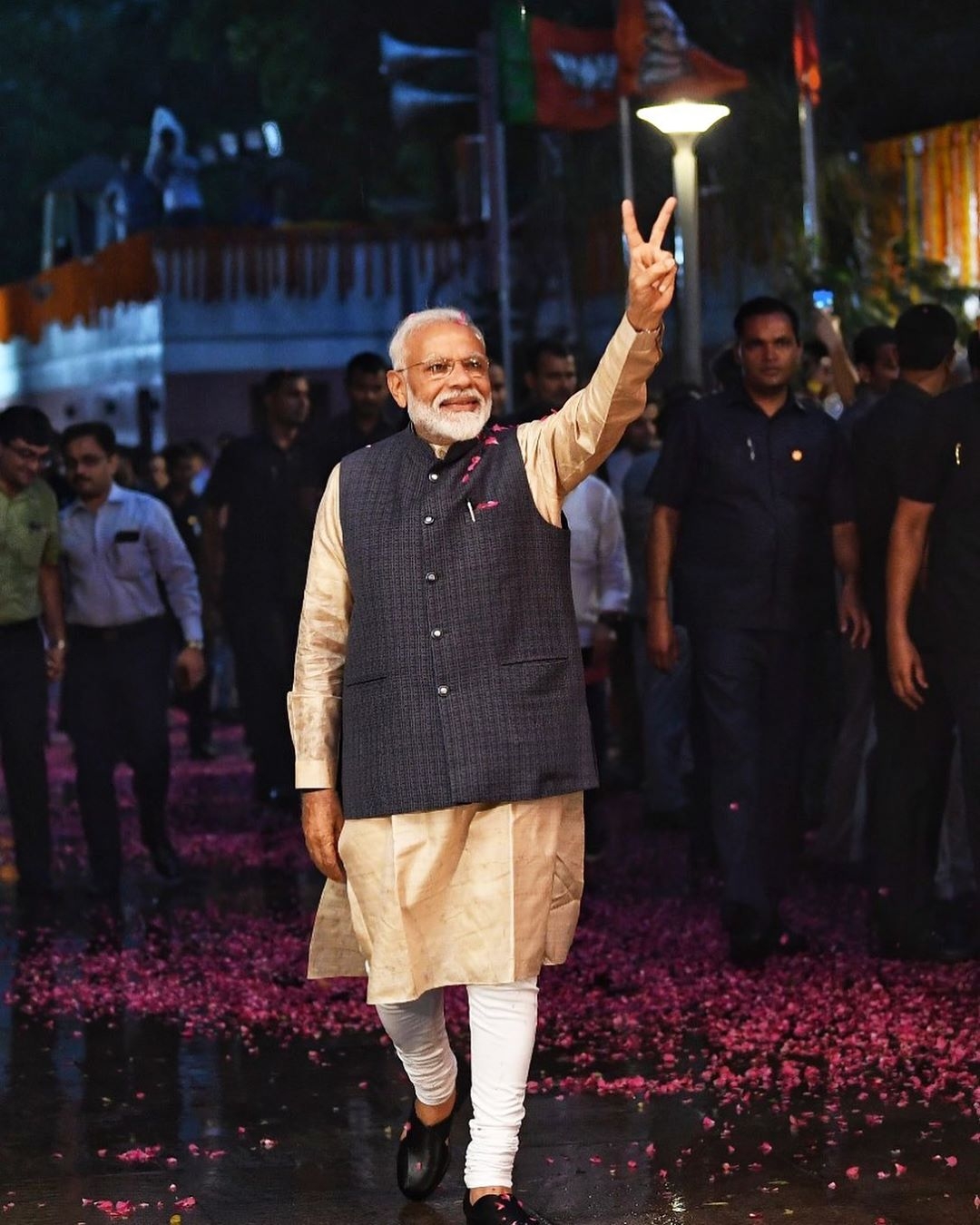
A quick survey of opinions, the commoners held in the society about Narendra Modi, would indicate that the poor held Modi in high esteem and visibly a strong leader as against the rag-tag bunch of scattered leaders. The voters of all categories know that mere economic performance does not win or lose elections, there are some other factors too which yield results, it may be social or cultural content. The voters weigh in their mind the ‘opportunistic’ alliances which hardly last for long, such arithmetical alliances at times do not persuade the voters to oblige. Therefore such alliances in UP, Karnataka, Madhya Pradesh ( in the recent General Election )are not taken as genuine alliances, which come to an end as quickly as these are formed. Moreover, when such alliances are formed without a national party at the core, these invariably break, simply because of the absence of a strong and quick decision-maker. There is a good reference by citing an example of Amit Shah who handled the belligerent Shiv Sena in Maharashtra before the elections. A very important observation has been there on record that Modi very shrewd as he is, has realised that India has entered into a changed economic scenario wherein its middle classes have emerged a bit stronger and have now come to stay strengthening India. Interestingly, Modi speaks the language of these newly emerging middle classes, he, therefore, is regarded as their representative, in whom everybody has found his or her saviour and a guide.
( The observations are made by R.Jagannathan published in the Times of India, Pune, dated 21st May 2019 ).
The common man in the street works upon a similar line of thinking and these are his justifiable exact reasons, which have prompted him to prefer Modi as his governor.
There have been several studies of Gujarat and Narendra Modi. Christophe Jaffrelot is a French researcher and a scholar in political affairs who is well acquainted with Indian politics. The present author of this Article does not agree with his views or his postulate, but his point of view needs to be well taken. The theme of his Article ( which follows ) in his own words is as following-
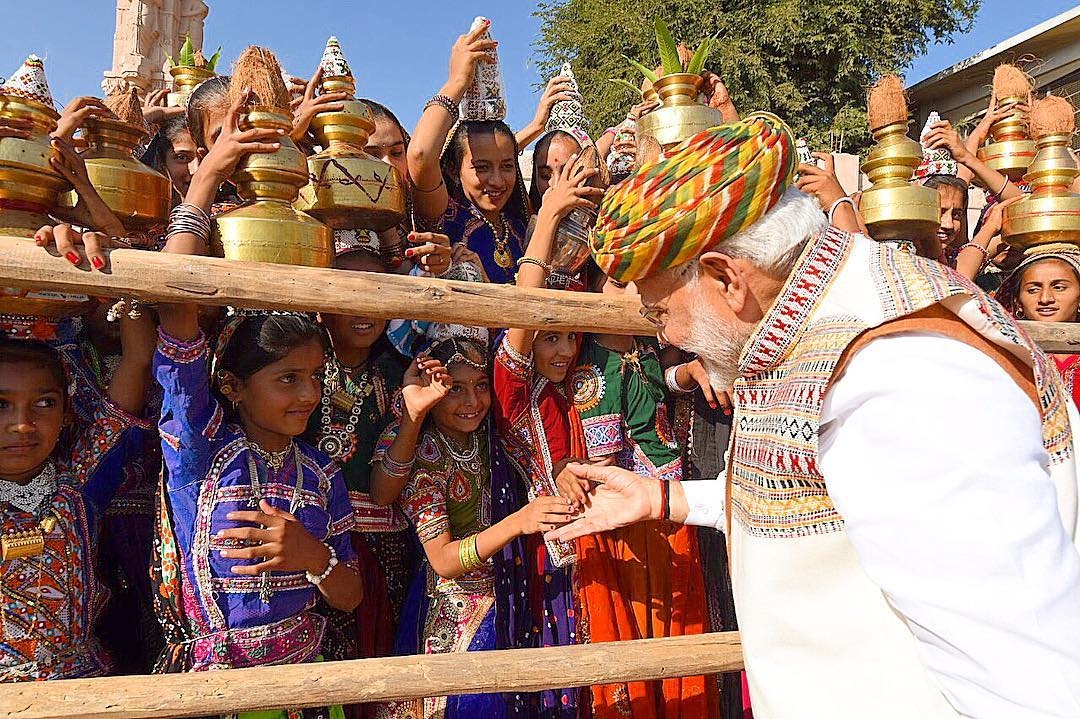
‘After the 2002 episode, Narendra Modi, the Chief Minister of Gujarat, shifted his political repertoire from that of a Hindu Hriday Samrat (King of Hindus’ heart) to that of development and Gujaratiness. He claimed that he was a development man (Vikas Purush) and that he represented the 60 million Gujaratis as an aam admi (common man). He projected himself as an embodiment of their identity—asmita. This populist repertoire, which was explicitly articulated during the Sadbhavna mission in 2012, is in tune with the general trend of Indian politics where most of the Chief Ministers claim to epitomize one sub-nationalism. In the case of Narendra Modi, however, this regional identity was defined in religious terms and reflected a banalization of Hindutva, an original process that was more likely to happen in Gujarat because of the traditional definition of the state’s identity.’ His observations on Gujarat politics and Modi’s style of politics needs to be studied.
His Article titled “Narendra Modi between Hindutva and sub-nationalism: The Gujarati Asmita of a Hindu Hriday Samrat”, states…
“…. While Narendra Modi claimed that he was the embodiment of Gujarat, he defined the state identity (asmita) as much in cultural terms as in religious terms, in contrast with the strategy of the other Chief Ministers who articulated a sub-nationalist ideology. In contrast to other states where the language was referred to as a unifying factor of the regional identity, in Modi’s approach Gujarati was not as prominent as religion—and was anyway co-extensive with the majority community. This Hinduization of regionalization is not unique. The Shiv Sena did something similar in Maharashtra, after it targeted Muslims instead of South Indians as the main adversaries of the local sons of the soil, a shift that the party’s association with Shivaji largely explains. In the case of Narendra Modi, this Hinduization of sub-nationalism is even easier to account for. In fact, the notion of Gujarati Asmita has traditionally been defined in religious terms, even by Congress ideologues like K.M. Munshi (1887–1971).
This local tradition helped Modi to articulate Gujarati sub-nationalism and his Hindutva repertoire simultaneously, so much that he could claim that he represented the Hindu majority when he defended the regional identity and vice versa. As a result, Gujarat stands as an exception—along with Maharashtra—regarding one of the “laws” that Prerana Singh has identified as one of the implications of her model. Usually “cohesive subnational identification and solidarity are likely to be associated with less conflictual ethnic relations. The inverse relation of my sub-nationalism index with the number of people killed in violence between Hindus and Muslims is, therefore, some evidence in support of its criterion validity.”99 Gujarat and Maharashtra are the only exceptions with very high scores in terms of both, sub-nationalism and ethnic violence.
(Source: Prerna Singh, “Subnationalism and Social Development: A Comparative Analysis of the Indian States,” World Politics, June 2015, 2. See also, Prerna Singh, “Subnationalism: The Concept, a Measure & Its Application to the Indian States,” Prepared for delivery at the Annual Meeting of the American Political Science Association, August 28—August 31, 2008, p. 3 (prernasingh.net/…/Singh-Subnationalism-APSA-2009).
( Source: INDIA REVIEW:2016,VOL.15,NO.2,196–217;) . http://dx.doi.org/10.1080/14736489.2016.1165557 ,
The purpose of such a preceding reference is that Christopher Jafferlot is trying to put forth the submission that Modi is repeating the model of his planning for success, is the same which he had followed when he was the Chief Minister of Gujarat. It is interesting to find that inadvertently he concedes the point that the Indian psyche which he is studying is based on a similar premise and cannot escape the unity of its effect from within. The Gujarat model which he had followed then, is replicable elsewhere in India too. Even as at present.
The electoral outcome of the counting and the resultant number of winners of the victorious parties is as follows:
The much publicised elections, the propaganda , mutual abusing, the dropped standard of the public statements and the speeches , thousands of crores of rupees spent in the process, the largest democracy, the largest administrative machinery deployed in conducting peacefully and successfully , the programme which had attracted the attention of the entire world , meeting after five years only to meet again after five years , produced a parliament consisting of the political groups- small and big, as referred to above, is the thing what we Democrats have earned.
The BJP under the leadership of Shri Narendrabhai Modi in the Government and the BJP under the Presidentship of Shri Amitbhai Shah have earned the mandate to guide the destiny of India for another term of five years.
Yet we need not forget the Modi-mantra –‘Nation First’
